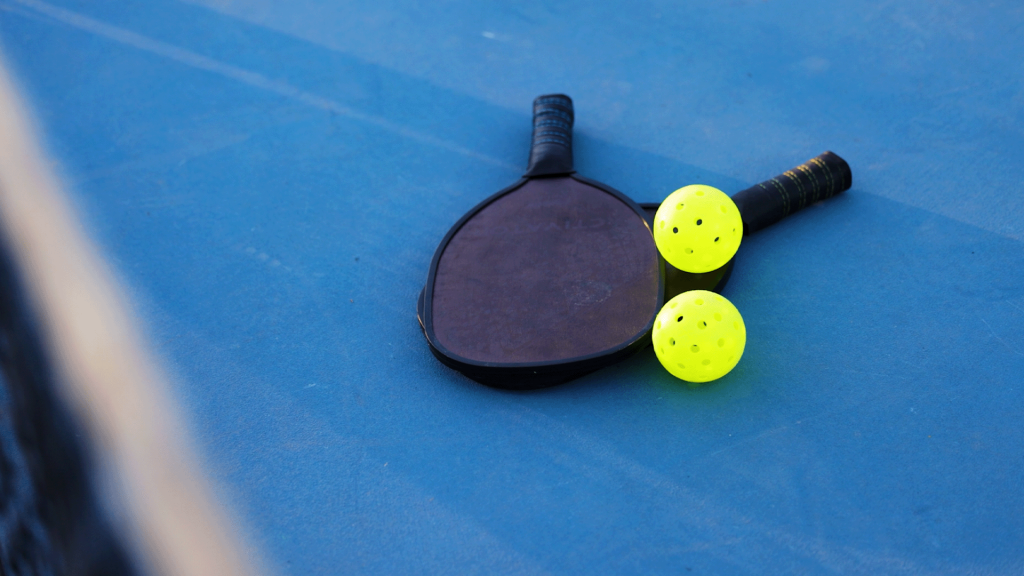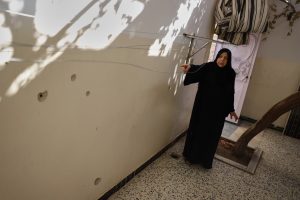Sound of summer: The crusade to fix pickleball’s noise problem

Doctors are taught to listen, only then are they able to address a problem or health concern a patient may have. Dr. Kathleen Romito has been listening, all too often recently, to the problems associated with noise coming from nearby pickleball courts.
What effect can exposure to pickleball noise have?
For some, there’s just no way around the noise. Romito personally experienced some of the same problems when courts were installed 57 feet from her house. It was then that the retired family physician said she needed to take a deeper look at the issue.
“It’s bringing people together, it’s providing a sense of community. It is making the world a better place,” Romito said. “I tried, as a physician, to accept it in my house until I started having nightmares about it and started having moments of really weird rage, and just started to notice what was going on in me. And yet I thought it was just me.”
In May 2025, Romito published a paper on the adverse health effects people are suffering from after being exposed to the excessive noise. During her research, she expected to hear about the anxiety, stress and psychological problems that can be associated with long-term exposure to constant loud sounds.
What did Dr. Romito’s research show?
She discovered that the brain and body also respond to the unique sound of pickleball paddles hitting the plastic ball in physical ways.

“About half of the comments that people are making out there in the public about their response have to do with physical symptoms,” Romito said. “Heart issues, brain or neurologic issues, disrupted sleep, things that we might consider more physical symptoms. (a neighbor says) I wake up in the middle of the night, and my heart is racing, and I think I hear pickleball pops outside.”
Most alarming, Romito said, were the self-reported PTSD-like symptoms. Of the 133 respondents, there were 23 mentions of “torture.” There were also 35 cases classified as “severe distress.” One example of that came from a neighbor who said, “No one would choose to live this way. It is physically and emotionally debilitating.”
Two reports of suicidal thoughts related to chronic pickleball noise fell into the same “severe distress” category.
Most of those complaints came from people living within 100 feet of a court, but even outside of that distance — up to 400 feet away — Romito learned there are physical and psychological side effects, especially during a long summer day when the noise can last for more than 12 hours.

“Even the leading sound experts are saying in that distance, the only success stories we’re seeing are, you have to limit the hours of exposure, you have to use high-quality sound barriers, and you have to be able to mandate the use of quiet equipment,” Romito said. “It’s not just one thing or the other you have to do all three of those.”
Can a pickleball noise consultant help?
Billions of dollars have been poured into the sport by companies capitalizing on its explosion over the last five to six years. Some of that money is finally being spent on trying to fix the noise issue.
That’s where a consultant like Dale Van Scoyk comes in. He’s a pickleball enthusiast, a player and a referee who describes the noise as an “impulse sound.” It’s created at a pitch humans are genetically trained to listen to. His company, Pickleball Sound Mitigation, helps communities devise solutions to the noise problem.
“When we’re looking at court areas, what we usually look for is a barrier option first, a barrier solution first,” Van Scoyk said. “We know what the sounds are predicted to be at those locations (we survey). We know where the limits are, and after that, then we can start to simulate barriers in different locations, different heights, different materials.”
That could be thick soundproof padding, a sound-absorbing cloth attached to a fence or even soundproof glass. There are hundreds of companies that cater to this demand, but most come at a steep price.
The town of Camas, Washington, decided against installing sound barriers on their pickleball courts in December 2024 because the options presented by the park director ranged in price from $26,000 to $114,000. Instead, city officials are working on limiting the hours of play or moving the courts to another location entirely.
What if sound-absorbing barriers aren’t good enough?
The next suggestion, Van Scoyk says, is quieter paddles. He points to the design of the paddle as the biggest noisemaker. According to Dink Pickleball, a custom equipment designer, there are over 800 companies making more than 4,000 different brands or styles of paddles. It helps to have a company like Van Scoyk’s wade through all of them to find the most effective models.
“We have tested a lot of paddles, hundreds,” Van Scoyk said. “We have what’s known as the “Blue List” of paddles. If there’s a whole spectrum of paddles, if you can eliminate the noisiest half, that, you’ve done something. You get out the noisiest ones, the ones that have that loudest pop, until we get down to a number of models that will be acceptable for that location.”

Pickleball has been the fastest-growing sport in the U.S. for four consecutive years, but manufacturers like Selkirk, Joola, Gamma and PaddleTek have only now begun to pivot to quieter equipment approved by the sports governing body, USA Pickleball. Straight Arrow News reached out to them for comment on Romito’s research and Van Scoyk’s mitigation efforts but have not yet received a response.
Those manufacturers also cater to competitive players who won’t use a quieter paddle if the noise mitigation technology affects the quality of play. Those top players say sound can be a signifier. It can tell you where the ball is going.
What about the pickleball balls?
The pickleball balls themselves can have a big impact on the game, according to top players. The Franklin X-40 is the gold standard and most popular. It’s also noisy.
Enter a company like Accel Digital Sports in Grand Rapids, Michigan. After more than 20 iterations, they’ve perfected what they call the DigiPro. It’s a 3D-printed ball that can lower impact sound by more than 10 decibels.
“It’s pretty interesting ball,” Van Scoyk said. “You can’t hear it at all. The bounce is the same, the size is the same, the weight is the same. In general, the wind doesn’t affect it at all. Those are factors that, in pickleball, make a difference. But how fast the popularity grows? We’ll just have to see.”
Price may also be a roadblock in this area. The DigiPro retails for $30. That’s roughly 8-times more expensive than the ubiquitous X-40 balls from Franklin.
Unbiased. Straight Facts.TM
Research on the adverse effects of pickleball noise cites disrupted sleep, cardiac and neurological complaints as the most common physical symptoms reported.

What are the next steps in the pickleball noise fix?
It seems technology is starting to push a little quiet progress in the pickleball kitchen. How fast and on what scale some of these changes are adopted will ultimately determine whether communities across the country accept the sport in their backyards.
According to Van Scoyk, the industry as a whole is aware the noise issues will only get worse as more courts are built to answer demand. A recent report from USA Pickleball says more than 18,000 new courts were built in 2024.
Kathleen Romito doesn’t want to stop pickleball’s expansion, but she believes there’s only one reliable answer to the problem.
“I don’t envy the people, the decision-makers,” Romito said. “I understand that there are politics involved, that there’s money involved, and yet we as a society generally don’t put dog kennels or shooting ranges or hockey rinks right next to homes. It was an easy solution during the pandemic to use those tennis courts, but I think it’s time to realize, pickleball, for the most part, in urban areas, probably belongs indoors, and we need to find new solutions.”
Is the sport at a tipping point? Romito believes there’s an opportunity for more research, as well as more discussion about the impacts excessive and prolonged noise can have on people. More debate and innovation may eventually lead to more effective solutions.





